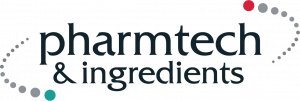Plant-Based APIs and Natural Extracts Drive Pharmaceutical Advancements in the EAEU
The global plant-based API market is projected to grow from approximately USD 32.4 billion in 2025 to USD 57.5 billion by 2034, reflecting a compound annual growth rate (CAGR) of around 6.1%. This expansion is driven by the pharmaceutical sector's shift toward natural compounds, which offer bioactive properties for drug development while aligning with sustainability goals. In the EAEU, this trend is amplified by investments in local biodiversity and advanced extraction technologies, enabling the creation of high-purity APIs from regional plants and herbs.
Manufacturers are innovating in several critical areas to harness natural extracts for pharmaceutical applications:
- Adaptogens and Stress-Relief Compounds: Siberian ginseng and ashwagandha are being explored for neuroprotective drugs and therapies for stress-related disorders, leveraging their adaptogenic effects to support mental health.
- Bioactive Compounds: Antioxidants, anti-inflammatories, flavonoids, and carotenoids are advancing drug candidates for inflammation, cancer, and cardiovascular diseases, with enhanced bioavailability through nano-encapsulation and green extraction methods.
- Plant-Derived Excipients: Starch and cellulose are increasingly used as fillers and binders in medicines, helping to form tablets and control drug release.
- Targeted Therapeutic Ingredients: Established extracts such as quinine, digoxin, and vincristine remain central to therapies in malaria, cardiovascular care, and oncology.
Challenges and How Pharmtech & Ingredients Helps Address Them
These challenges also bring opportunities. Supply chain vulnerabilities caused by geopolitical shifts and climate-related raw material shortages demand resilient solutions. Pharmtech & Ingredients directly addresses this through its matchmaking programme, connecting regional pharmaceutical buyers with international suppliers, controlled-environment agriculture pioneers, and nutraceutical suppliers. Exhibitors and visitors can build the partnerships needed to diversify sourcing and strengthen cross-border resilience.
Also, stringent regulatory requirements for purity and efficacy often create barriers for SMEs and emerging biotech firms. Pharmtech & Ingredients offers tailored support through its expert-led conference programme and direct access to regulators. SMEs gain practical guidance on compliance pathways, discover opportunities for partnerships with established manufacturers, and can leverage the harmonised EAEU framework to scale across five countries through a single approval process.
Pharmtech & Ingredients 2025
Taking place November 25–28, 2025, at Crocus Expo, Pharmtech & Ingredients stands at the forefront of this sector, providing a vital platform to navigate these dynamics. With over 560 exhibitors and over 10,000 visitors from more than 27 countries, the exhibition features a dedicated zone for natural extracts and plant-based APIs, alongside:
- Ingredient Discovery & Sourcing: A comprehensive display of APIs, excipients, and bioactive ingredients for R&D teams.
- Expert-Led Conference Programme: Market forecasts, scientific breakthroughs, and compliance pathways with insights from leading pharmacologists and regulators.
- Supply Chain Optimisation: From raw material sourcing to finished dosages, with a focus on ethical and innovative solutions.
- Networking & Collaboration: Connecting pharma experts across preclinical, clinical, and commercial drug development.
As the EAEU strengthens its role in global pharmaceutical innovation, Pharmtech & Ingredients is the gateway for companies turning plant-based potential into compliant, sustainable, and market-ready pharmaceutical products.
About Pharmtech & Ingredients
Pharmtech & Ingredients is Eurasia's leading international exhibition for pharmaceutical production and ingredients, showcasing equipment, raw materials, and technologies across the pharma supply chain. For more information, visit https://expopharmtech.com.
Pharmtech & Ingredients 2025
ITE Eurasian Exhibitions FZ LLC
email us here
Visit us on social media:
LinkedIn
Legal Disclaimer:
EIN Presswire provides this news content "as is" without warranty of any kind. We do not accept any responsibility or liability for the accuracy, content, images, videos, licenses, completeness, legality, or reliability of the information contained in this article. If you have any complaints or copyright issues related to this article, kindly contact the author above.
Wireless Electric Vehicle Charging Market to Reach USD 2.3 Bn by 2034, Growing at 29.2% CAGR | TMR Analysis
From Redemption to Revolution: Iylon Precision Oncology Honors CEO John Tarantino’s Selfless Leadership and Philanthropy
Aria Reserve Sets Record Timeline as First Residential Tower Delivered in Edgewater’s New Era
Więcej ważnych informacji
 Jedynka Newserii
Jedynka Newserii

 Jedynka Newserii
Jedynka Newserii

Polityka

UE przyspiesza inwestycje w obronność i bezpieczeństwo. Pomagają w tym nowe narzędzia finansowe i uproszczenia dla przemysłu obronnego
Unijne inwestycje w bezpieczeństwo i przemysł obronny nabierają tempa. Strategia Gotowość 2030 zakłada integrację krajowych przemysłów obronnych państw członkowskich oraz rozwój nowych technologii w armiach. Komisja Europejska proponuje też różne możliwości zwiększenia finansowania wydatków obronnych. – Unia Europejska postawiła na bezpieczeństwo nie tylko w wymiarze deklaracji, ale też konkretnych programów – podkreśla Michał Szczerba, europoseł z Platformy Obywatelskiej.
Handel
Inflacja w nadchodzących miesiącach będzie pozostawała w celu inflacyjnym. Pojawia się duża przestrzeń do obniżek stóp procentowych

Inflacja już znajduje się w paśmie dopuszczalnych odchyleń od celu inflacyjnego i wszystko wskazuje na to, że pozostanie w nim przez dłuższy czas. Rada Polityki Pieniężnej również ma tego świadomość. Dlatego w czasie najbliższych posiedzeń powinny się pojawić obniżki stóp procentowych. Zdaniem ekonomisty dr. Jarosława Janeckiego rozsądnym poziomem głównej stopy procentowej byłby poziom 3,5–4 proc., czyli można się spodziewać obniżek o 100–150 punktów bazowych.
Nauka
Pomiar dokładnej liczby ludności pozostaje dużym wyzwaniem. W erze migracji wymaga to nowych narzędzi i definicji

Dokładne i porównywalne dane na temat ludności są niezbędne m.in. do celów statystycznych i administracyjnych. Dlatego rośnie zapotrzebowanie na statystyki z zakresu demografii, migracji, starzenia się społeczeństwa oraz dane regionalne i lokalne. Państwa Unii Europejskiej odchodzą od „tradycyjnego” spisu przeprowadzanego co 10 lat w kierunku wykorzystania danych ze źródeł administracyjnych. Przyszłością jest wykorzystanie w pomiarze danych z mediów społecznościowych czy sieci komórkowych.
Partner serwisu
Szkolenia

Akademia Newserii
Akademia Newserii to projekt, w ramach którego najlepsi polscy dziennikarze biznesowi, giełdowi oraz lifestylowi, a także szkoleniowcy z wieloletnim doświadczeniem dzielą się swoją wiedzą nt. pracy z mediami.










.gif)

 |
| |
| |
|